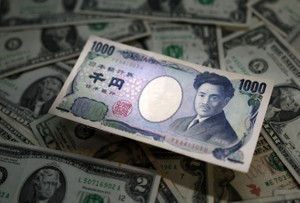THE ASAHI SHIMBUN
November 30, 2023 at 07:00 JST
KUSHIRO, Hokkaido—“Marimo” moss balls, the fuzzy green spheres that have brought fame to Lake Akanko here, are shrinking because of global warming, a research group found.
The maximum surface thickness of marimo could have decreased by around 1 centimeter over the past three decades when water temperatures increased, the group said in the journal Scientific Reports in October.
Lake Akanko is now the only place in the world with a colony of giant marimo that are more than 20 cm in diameter. These marimo are designated as a special national treasure.
Smaller marimo have been sold in glass containers as “pets.”
The life cycle of marimo includes phases of growth, destruction and regeneration.
Marimo in the lake are formed when filamentous algae become entangled and grow into spheres by rolling with the wind and waves.
The marimo’s interior, which is not exposed to light, decomposes, creating a cavity. The exterior eventually breaks down, returning the ball to filamentous algae.
The research group from Kobe University and other institutes grew a marimo with a diameter of 15 cm and a thickness of 4.1 cm in an aquarium for about 290 days from December 2019 to September 2020.
The group regularly measured the exterior’s thickness around the cavity and the algae’s density using MRI analysis.
The results showed a correlation between accumulated average water temperature and marimo density.

The interior algae decompose faster than they grow at higher accumulated water temperatures. This leads to a lower density and a larger central cavity, causing marimo to thin, they said.
Using past water temperature data, the group estimated the thickness of marimo likely decreased from a maximum of 4.7 cm in 1988 to around 3.7 cm in recent years.
They also discovered that to maintain the same thickness of 4.1 cm as the marimo grown in the experiment, the accumulated water temperature must be at a level where the highest summer water temperature is 24 degrees or less.
HIGH WATER TEMPERATURES THE NORM
According to the Kushiro City Board of Education, the highest water temperature recorded in Lake Akanko was 28.5 degrees during an extremely hot summer in 2021.
This summer, the top temperature was 27.5 degrees.
Since 2015, the water temperatures have consistently exceeded 24 degrees, indicating that higher summer water temperatures are now the norm.
“In recent years, I noticed a decrease in the number of stout marimo,” said Yoichi Oyama, a member of the city education board’s marimo research office and also part of the research group.
“While various factors, such as nutritional conditions and water flow, can be considered, the increase in water temperature has been confirmed as a contributing force,” he said.
NEGATIVE IMPACT ON KELP APPEARANCE
In Hokkaido, high seawater temperatures have also apparently changed the appearance of kelp.
Since summer, a thread-like organism called Hydrozoa has been increasingly found on the surface of kelp.
Hydrozoa belongs to the cnidarian family, the same as sea anemones.
Although Hydrozoa do not affect the edibility of kelp, they do alter its appearance.
“I have never seen so many Hydrozoa adhering to kelp before,” Shoichi Ida, a 70-year-old kelp harvester in Rausu, Hokkaido, said. “Even with scrubbing using a brush, (Hydrozoa) does not come off easily. So, I have no choice but to throw away kelp with too much (Hydrozoa).”
According to the Hokkaido Research Organization, Hydrozoa rapidly proliferate when the seawater temperature exceeds 15 to 16 degrees.
High water temperatures of around 20 degrees were observed along the eastern coast of Hokkaido from summer to autumn this year.
According to preliminary figures from the Japan Meteorological Agency, the monthly average sea surface temperatures around Hokkaido were 3.1 degrees above normal in July, 4.3 degrees higher in August and 3.8 degrees higher in September.
The JMA said the sea surface temperatures for each month from April to September were the highest since 1982, when a new method of compiling such statistics was introduced.
(This article was written by Morikazu Kogen and Tomoyuki Yamamoto.)




















Stories about memories of cherry blossoms solicited from readers
Cooking experts, chefs and others involved in the field of food introduce their special recipes intertwined with their paths in life.
A series based on diplomatic documents declassified by Japan’s Foreign Ministry
A series on the death of a Japanese woman that sparked a debate about criminal justice policy in the United States
A series about Japanese-Americans and their memories of World War II
Here is a collection of first-hand accounts by “hibakusha” atomic bomb survivors.